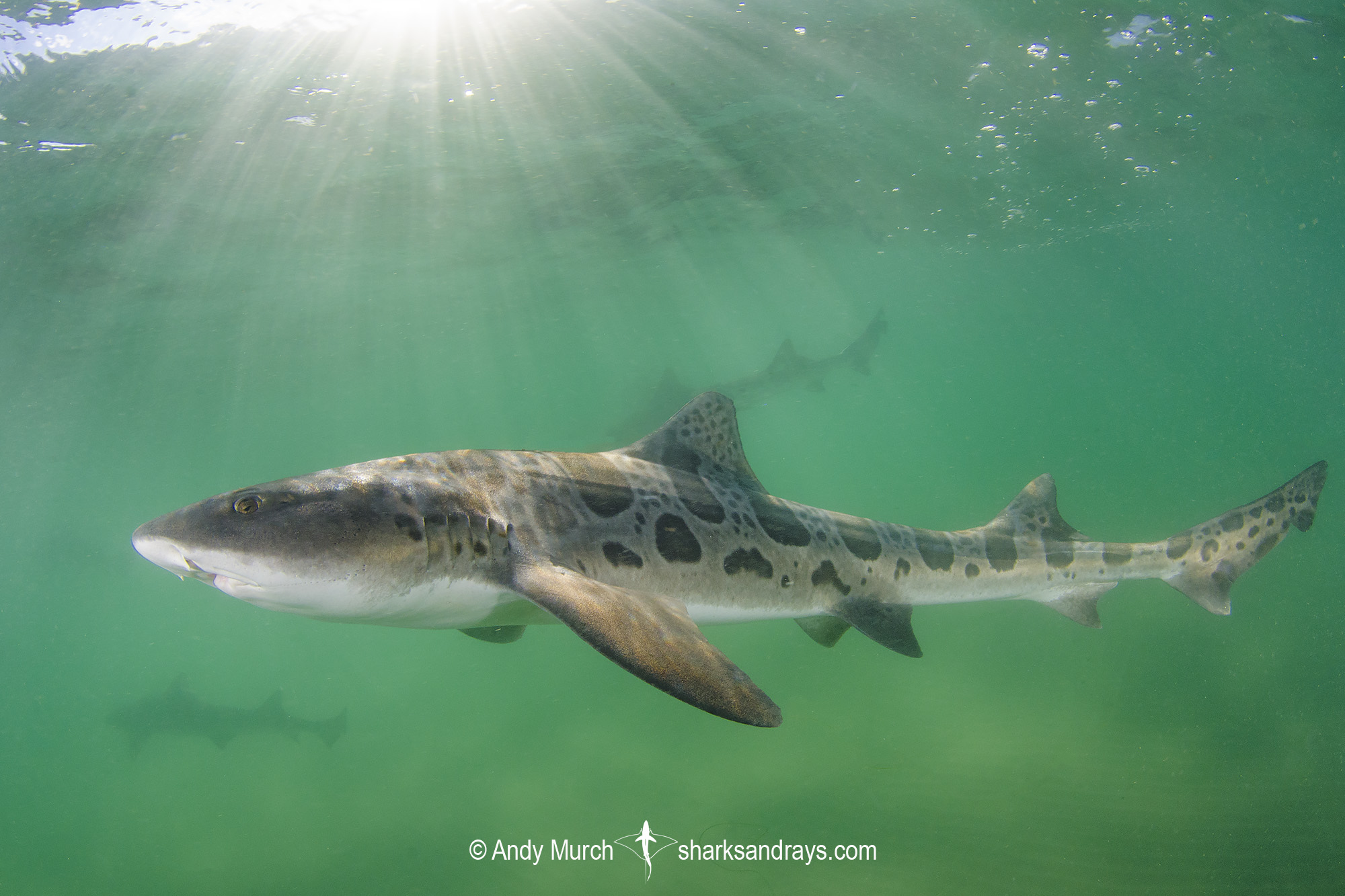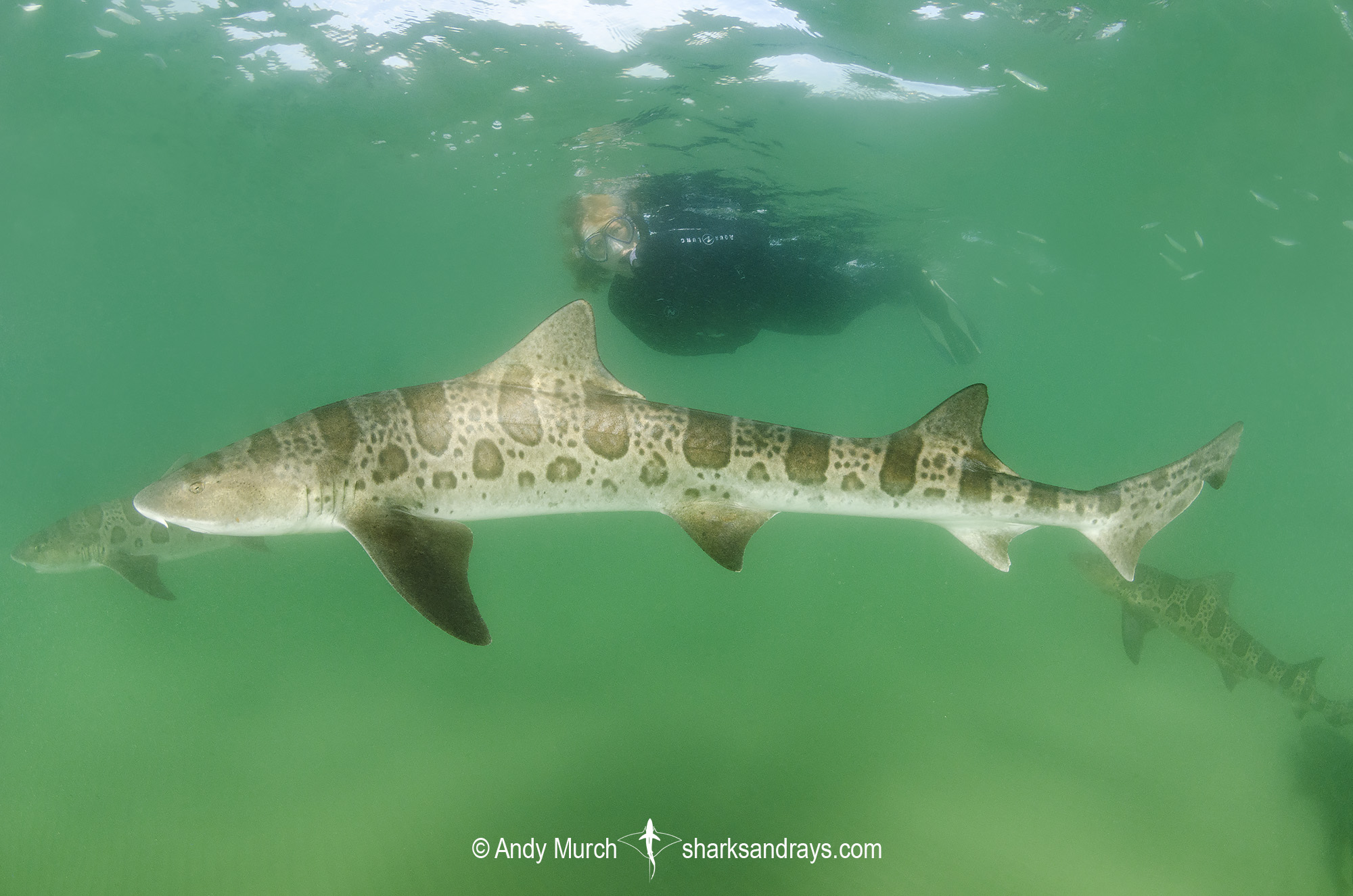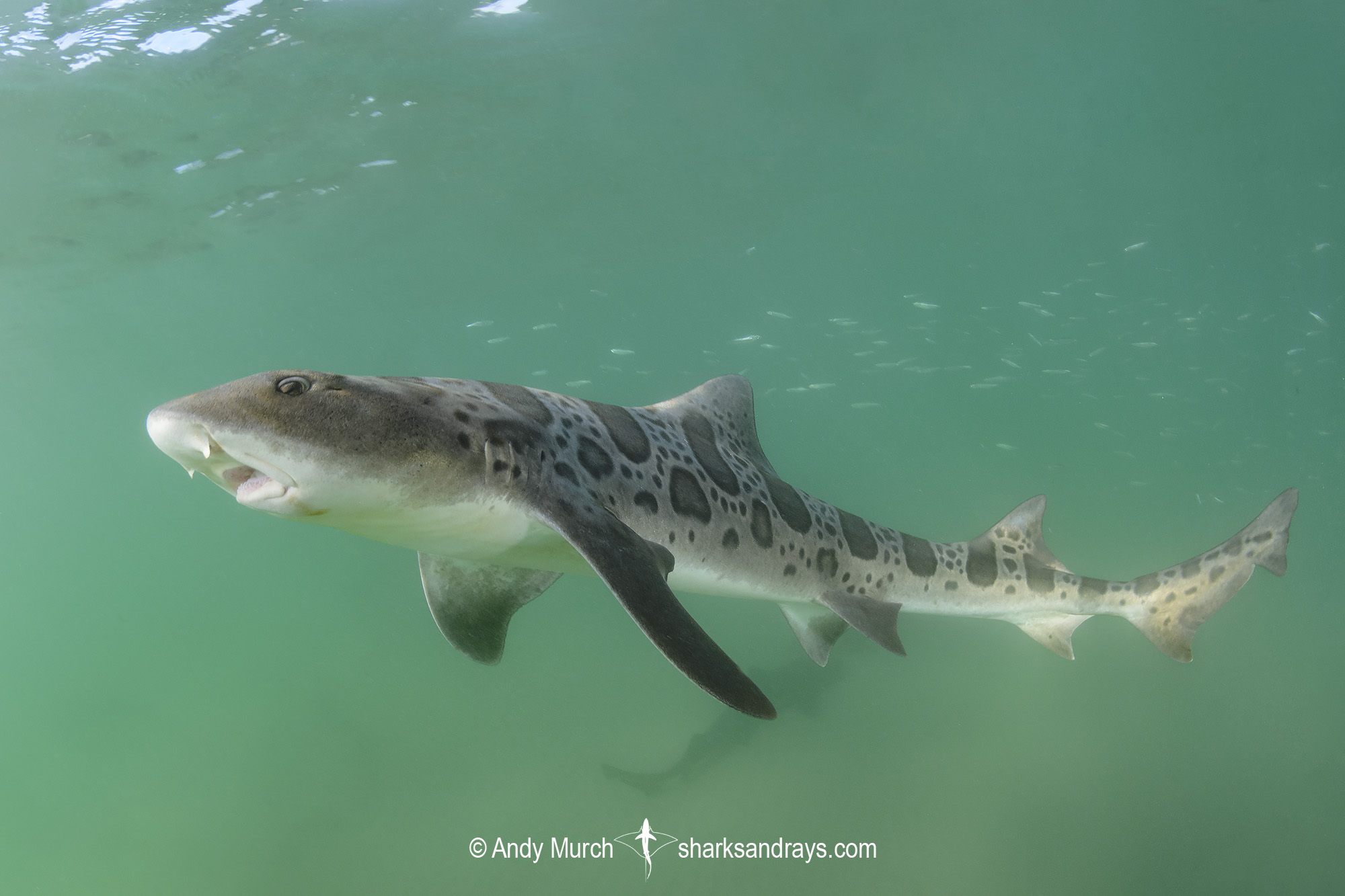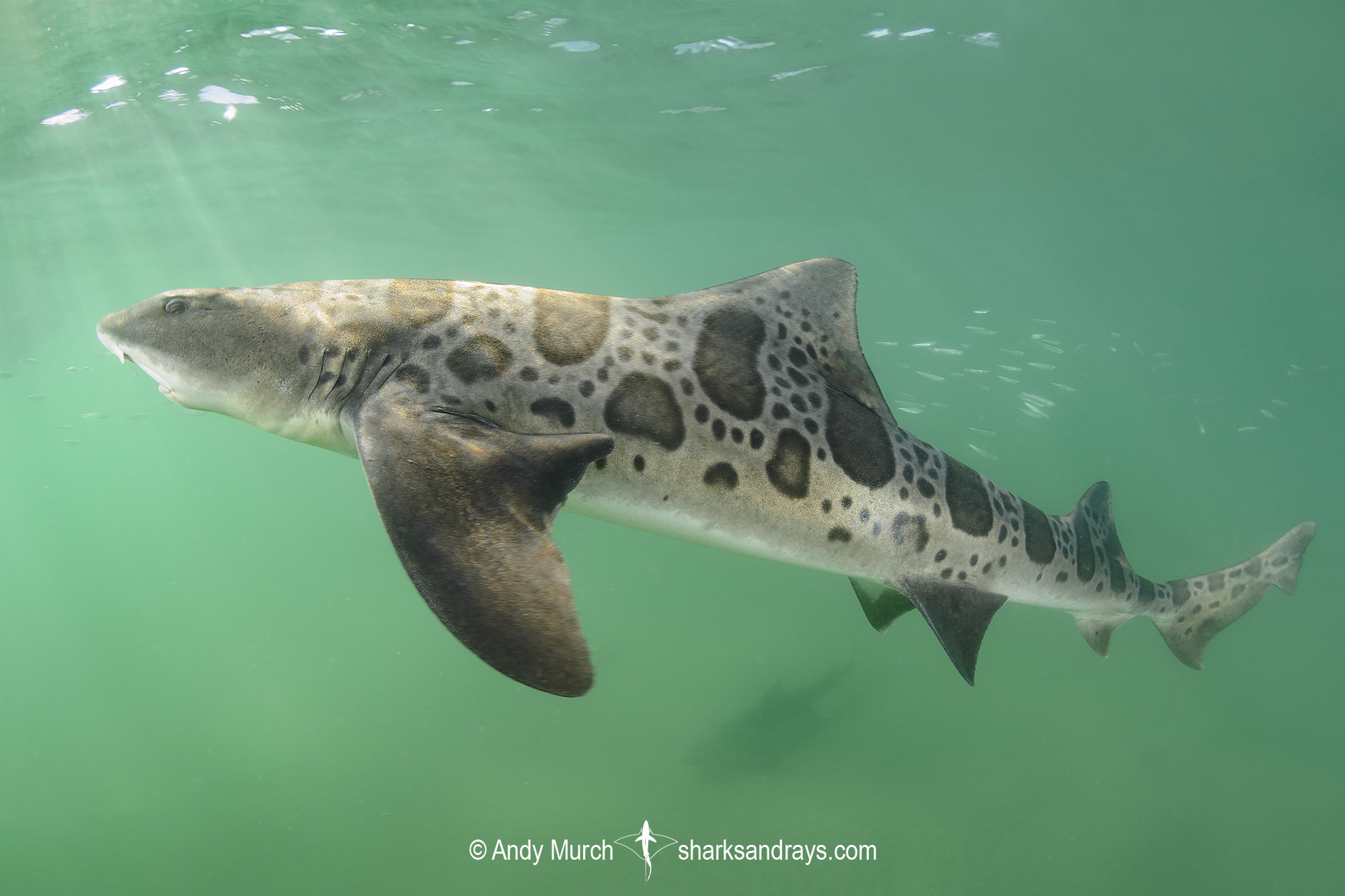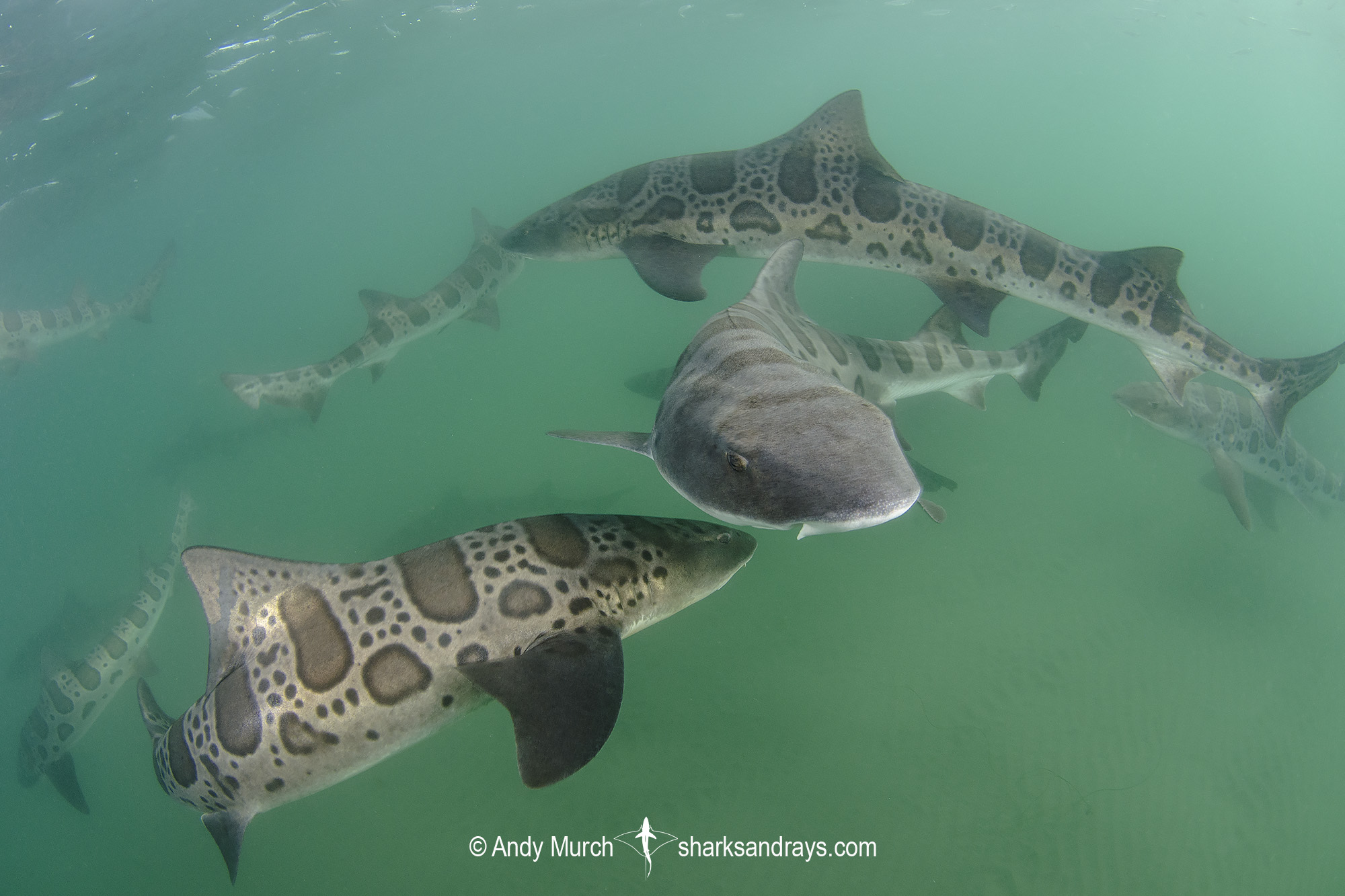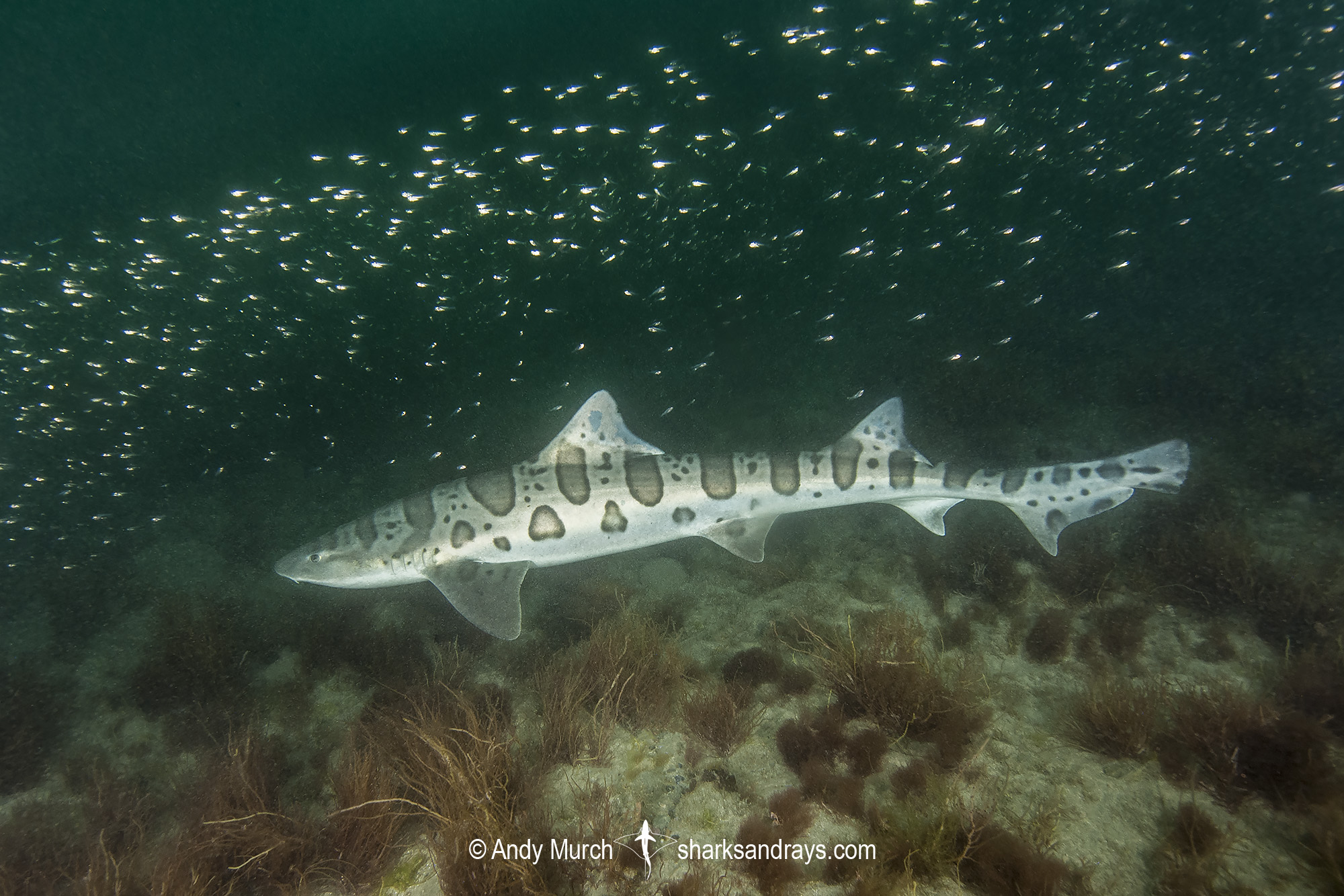Common names
Leopard Houndshark, Leopard Shark.
Binomial
Triakis semifasciata.
Synonyms
Mustelus felis, Triakis californica, Triakis semifasciatum.
Identification
Easily recognizable by its striking dorsal markings; a series of large brown saddles (edged in darker brown) on a light brown background that run from head to tail. The saddles are usually separated by rows of dark brown dots. Occasionally, other patterns occur, such as irregular dark stripes running horizontally along the body (see leopard houndshark image #281) or irregular spots and blotches over the entire dorsum. Ventral surface pale.
Size
Maximum length approximated 180cm. One individual reportedly 213cm. Size at birth 17-20cm.

Conservation Status
LEAST CONCERN
The leopard houndshark is one of the most common nearshore sharks on the temperate to subtropical eastern Pacific coast. There are three regional sub-populations in northern California, southern California and Mexico that have limited interbreeding.
In California, the leopard houndshark is mostly caught by recreational anglers, but is also a small bycatch component of some commercial fisheries. State catch limitations have led to an population increase in this species in California; where most US landings occur. Little is known about the health of the leopard houndshark population in Mexico but it represents less than 1% of the catch in that region.
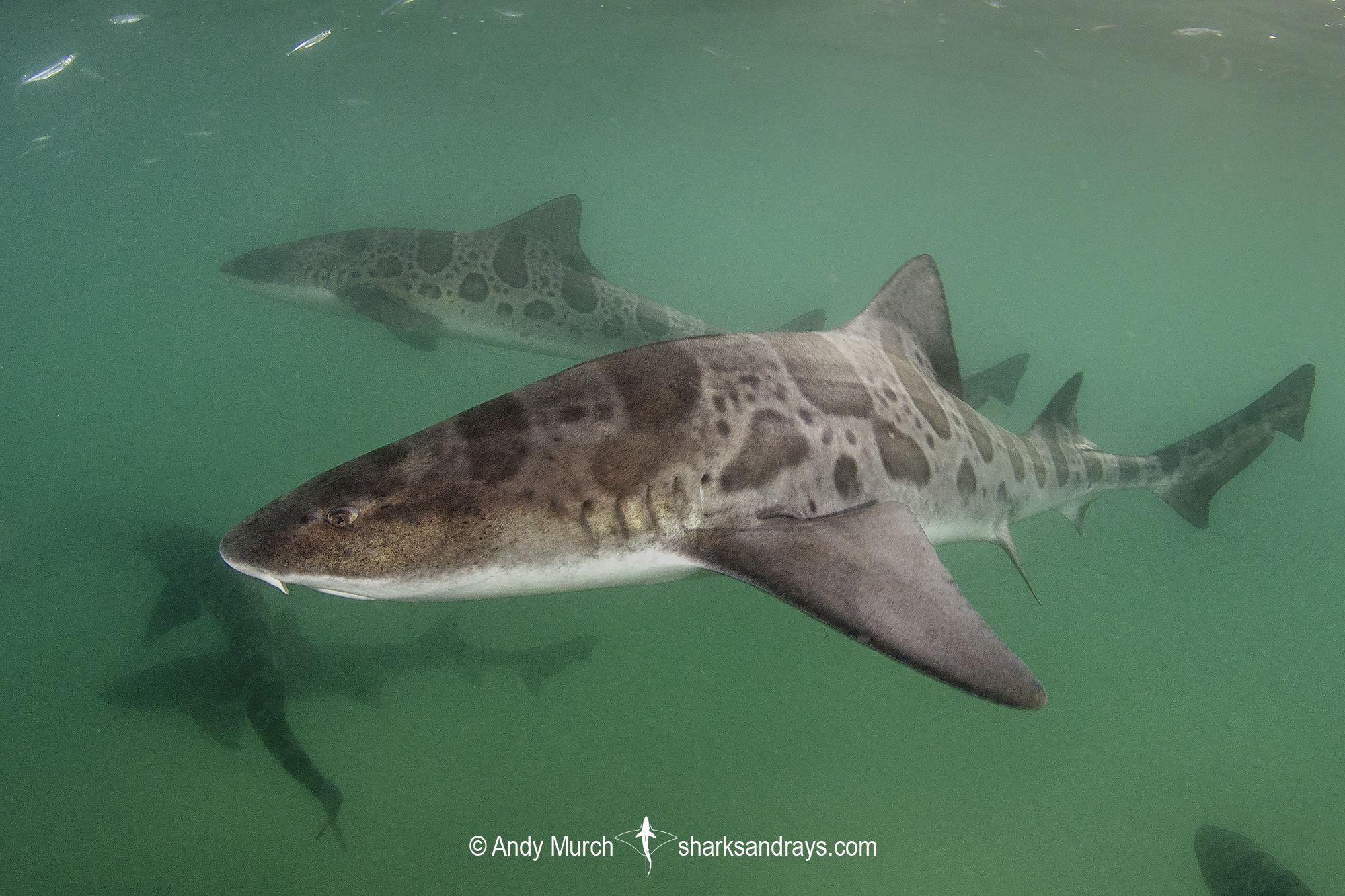
Habitat
A temperate water species inhabiting shallow muddy or sandy bays, estuaries, sloughs, rocky reefs, and kelp forests. Intertidal to 156m but usually 1-20m.
Distribution
Pacific coast of North America. Found from Washington State to Mazatlan, Mexico, including the Gulf of California. There is limited genetic exchange between the three sub-populations of banded houndsharks in Northern California, Southern California, and Mexico.
Reproduction
An aplacental viviparous species (without a yolk-sac placenta). Up to 36 pups per litter. Gestation is approximately 10-11 months. The reproductive cycle is annual.
Diet
An opportunistic benthic predator that feeds heavily on a wide variety of invertebrates and small fishes. Leopard sharks are known to gorge themselves on fish eggs when available.
Behavior
Leopard houndsharks form large nomadic schools, generally segregated by size and sex. They are known to mix with other elasmobranch species such as gray and brown smoothhounds, bat rays, and shovelnose guitarfish. The schools move inshore with the rising tide to feed on intertidal invertebrates. Their migratory patterns (if any) are still unclear.
Reaction to divers
Fairly easy to approach to within 2-3m by snorkelers but difficult to approach on scuba. During baited snorkeling encounters, leopard sharks will make close passes but they are still wary of divers. From personal experience, even while using a rebreather they remained extremely skittish.
Diving logistics
By far the most convenient and reliable place to encounter leopard houndsharks is at La Jolla Shores, north of San Diego, CA. During mid to late summer, scores of leopard sharks migrate into the shallows to feed. The best spot to see them is in front of The Marine Room; a restaurant at the south end of the main surfing beach.
The sharks hunt in the shallows between the shore and the surf line, so it is possible to see them simply by snorkeling right off the beach.
What’s new
View our full list of updates
Similar species
Gray Smoothhound Shark Gray (and brown) smoothhound sharks have a similar body shape but they are easily distinguished by their lack of bold markings.

